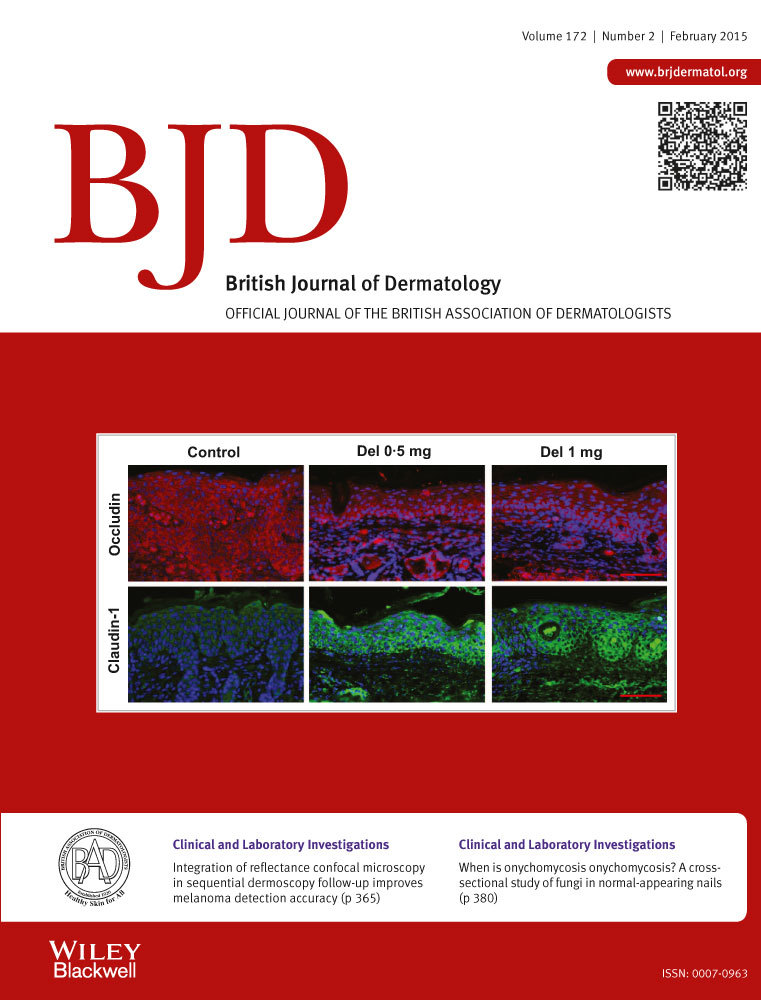Aldara®-induced skin inflammation: studies of patients with psoriasis†
Summary
Background
The application of Aldara® cream containing 5% imiquimod stimulates Toll-like receptor 7/8 on plasmacytoid dendritic cells, thereby producing a potent immunomodulatory effect. This has been reported to trigger psoriasis.
Objectives
To establish a human model of Aldara-induced psoriasis-like skin inflammation in patients with psoriasis.
Methods
Nonlesional psoriatic skin of 13 patients was treated with Aldara for 2 or 7 days. The skin was evaluated clinically and histologically on days 2, 4 and 7. Cytokine expression in Aldara-treated, lesional and nonlesional psoriatic skin was compared using reverse-transcription quantitative polymerase chain reaction.
Results
Nine of the 10 patients receiving application of Aldara under occlusion for 2 days developed redness, induration and scaling. Histological analysis revealed focal parakeratosis, acanthosis and perivascular mononuclear infiltration. On days 4 and 7 both clinical and histological signs of inflammation subsided. Two of the three patients treated with Aldara for 7 days developed erosions leading to psoriasis on day 21. Cytokine markers of activation of the innate immune system [interferon-α, interferon regulatory factor-7 and interleukin (IL)-1β] were equally expressed in lesional and Aldara-treated skin (n = 6). IL-6 and tumour necrosis factor-α were preferentially expressed in Aldara-treated skin. Adaptive immune system activation occurred only partially: IL-23p19 and IL-22 were similarly overexpressed in Aldara-treated and lesional psoriatic skin, but IL-17A and IL-12p40 were significantly underexpressed in Aldara-treated skin compared with lesional psoriatic skin. IL-10 was significantly overexpressed in Aldara-treated skin.
Conclusions
We were able to induce psoriasis-like skin inflammation although typical psoriasis did not develop, possibly due to incomplete adaptive immune system recruitment and the powerful stimulation of IL-10 counter-regulation.




